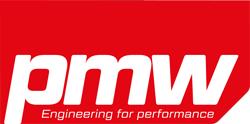Toyota’s Motor Sports Unit Development Division explains how CFD is benefitting all of its motorsport programs, from the Japanese domestic SuperFormula to the FIA World Endurance Championship
The Motor Sports Unit Development Division (MSUDD) of Toyota Motor Corporation has been using CD-adapco’s STARCD and STAR-CCM+ for many years to develop race vehicles in a variety of top motor sport categories. The division conducts R&D on race cars every day at the company’s Higashi-Fuji Technical Center, located at the foot of Mt. Fuji.
One of the roles of the MSUDD is to develop vehicles for the FIA World Endurance Championship, which includes the ’24 Heures Du Mans’. It also conducts R&D on engines and cars for Japanese domestic race series such as the SuperFormula and Super-GT series. MSUDD managers, Yuichiro Kato (Engine Group) and Teppei Hojo (Aerodynamic Group), consider CAE/CFD to be critical to the company’s successful design of racecars.
A team guided by three principles
MSUDD has three principles to guide its approach to design and to develop cars that its customers will find both fast and visually stunning. CAE/CFD fully supports all three of them:
1) Accelerate the development of advanced automotive technologies through participation in racing.
2) Attract new race fans by demonstrating enthusiasm to attack challenges in difficult and unknown technologies.
3) Broaden the range of car enthusiasts by organizing events and other opportunities where people can experience the excitement of driving cars and the dreams that cars can inspire.
The Engine Group is responsible for the performance and reliability of engines and hybrid components and uses CAE/ CFD for powertrain design and for the development of new analytical technologies. The Aerodynamics Group also uses CFD in the development of car aerodynamics.
The CAE/ CFD team within the MSUDD is a group comprised of around 15 people. With the limited time and resources available to such a small group, competing in the tough world of racing requires a technological standardization that enables the team to prioritize analysis work, coordinate post-processing schedules (design, test and wind tunnels), and ensure that the analytical results are consistent and repeatable.
Vehicle development is a race against turnaround time
In the world of racecars, developments for the next year, preparations for the next race, and work to accommodate the frequently changing regulations are all extremely important. CFD can thus make an important contribution by significantly reducing turnaround time.
“Race cars are not like production vehicles that mature over a span of several years,” begins Kato. “Even if the external shape of the most recently designed race car looks identical to the car from the previous year, its internal components are likely to be entirely different. The team is essentially developing a completely new car every single year. With such a quick turnaround, the reliability and performance of elements, including the external aerodynamic shape and engine, must be ensured before the car is ever built. The conventional approach has been to undergo a repetitive process of prototype building and testing, but now we are able to conduct thorough analytical assessments before even a single part has been made.”
The aerodynamic designs of Le Mans cars are developed jointly with Toyota Motorsport GmbH (TMG). During Toyota’s participation in F1, wind tunnels were central to development efforts, and CFD played a supplemental role. Today however, CFD is critical to concept testing, and plays an extremely important role in visualizing flow and deciding on vehicle design concepts. CFD plays a key part not only in reducing development turnaround time, but in recent years, in the actual parts development process as well.
“Since there is no time to put a real car in a wind tunnel to make adjustments between races, and because opportunities for track testing are limited, a process is emerging for quickly moving design elements from CFD to actual vehicles, increasing the importance of the CFD output,” adds Hojo. “There is a growing need to make decisions based on initial tests. So the car performance from the very first test determines the competitiveness of a vehicle during the season.”
Of particular importance today are technologies that enable engineers to improve vehicle and component performance before any manufacturing is done (in the design and development phase). Using CAE/CFD technologies such as CD-adapco’s STAR-CCM+ is absolutely essential to making this possible considering the industry’s highly demanding development schedules and processes.
Applying race car technologies to production vehicles
For automotive manufacturers, the primary purpose of participating in motor sports, beyond the publicity they generate, is to quickly develop advanced technologies. It is particularly important that companies are able to internally deploy and share technological know-how derived from race car development, and to apply that knowledge to the development of production vehicles.
The mission of MSUDD is to develop advanced technologies through racing activities and assist with the application of those technologies to production vehicles. This division regularly meets with production vehicle departments in the company, allowing them to engage in two-way knowledge sharing and discussions. Information is shared not only on analytic technologies, but also on aerodynamics technologies, such as flow control methods.
The aerodynamics development in motor sports happens at an extremely fast pace, which means the best outcome must be achieved in the shortest time possible. For example, the CFD design loop for a single development part lasts about two weeks. The keys to success in this context lie in the performance of as many calculations as possible during that time, and whether they result in the identification of a good solution. For this reason, steady-state calculations are primarily used despite the fact that the actual vehicle aerodynamics include unsteady phenomena and extremely complex flows. Therefore, it is important to find a trade-off between accuracy and computational speed.
“It is extremely difficult to balance the opposing forces of calculation accuracy and shortened turnaround times,” says Hojo. “Because we are constantly under pressure to improve performance by developing new parts, this is one of the most challenging areas. Finding an efficient way to use unsteady calculations during a two-week development cycle would help to solve this problem.”
“With engines, we have in the past faced challenges with regard to calculation accuracy,’ states Kato. “However, it has become possible to achieve strong correlation between simulations and real-world testing. Today, most of the improvements we implemented are having the desired effect at the track. We are currently very satisfied with what we are able to do using STAR-CCM+. We are promoting further efficiency improvements through additional automation combined with optimization.”
Testing virtual results against reality
The key problems that arise when conducting design and development focused on CFD are issues of CFD reliability or accuracy. For this reason, it is extremely important to validate the simulation approach by checking the correlation between wind tunnel tests and CFD results. To do this, aerodynamic values such as downforce, drag, and surface pressure distributions are compared with experimental results such as force measurements and Particle Image Velocimetry (PIV). Because wind tunnels simulate actual conditions, their results are treated as a standard against which to adjust the mesh resolution and calculation settings used in the analysis. To accomplish this, a very large number of calculation cases are usually evaluated.
The Aerodynamics Group also performs measurements on actual vehicles. Aerodynamic values such as downforce can be obtained while the vehicles are running on the track, providing comparative data against wind tunnel and CFD results. If there are inconsistencies, engineers examine ways to improve the wind tunnel testing and CFD models. There are cases in which CFD accuracy improvements must be implemented in a very short time frame (in time for the next wind tunnel tests and races), while other improvements can be made over the mid- to long term.
The Engine Group conducts stringent evaluations before mounting an engine in an actual vehicle, and only installs the most effective parts based on its findings. Therefore, little evaluation is performed during the race. Irregularities, whether they require an immediate response or can wait to be addressed over the mid-term, can be identified quickly.
Everything in an easy to use script
“Speaking from my experience of having used various CFD software in the past, I can say this: Since most functions in STAR-CCM+ and STAR-CD can be managed by scripts, there is no need to open the GUI,” explains Kato. “It is extremely easy to define operations that can be executed in batch, seamlessly allowing connections to optimization and other external software applications. Today, calculations based on fluids alone will not get you very far. CD-adapco’s software applications are extremely easy to use in conjunction with the various applications from both upstream and downstream processes. It is also very practical that the script can be read by anyone who sees it.”
On the aerodynamics side as well, everything, including the creation of analytic models, is executed with a script, and feedback indicates that it is extremely easy to use once you get familiar with it. In aerodynamics, data processing has been completely automated since the introduction of STAR-CD, and everything continues to be completely automated with STAR-CCM+. When conducting analyses, it is extremely important that everything is standardized so that no random variations in analytical results are introduced by individual engineers. This ensures that even if new team members join a group, there will be no differences in the analytical results they produce. In addition, since everything is completely automated in the script, internal education is offered to ensure that members understand the script. This keeps the process from becoming a black box and encourages new members of the team to gain important skills for success.
Finally, we were given feedback on our technical support services as long time users of CD-adapco products.
“The technical support engineering team offers very quick responses,” explains Kato. “When one thinks of a foreign service provider, one might expect that the Japanese office will be treated as a mere relay point, and the content may be sent in a raw format, without having been fully understood, but the level of services has been on par with that of a domestic vendor.”
“The analytical methods are completely established, but we hope that we can work together on technology developments to help speed up the development loop,” concludes Hojo.


